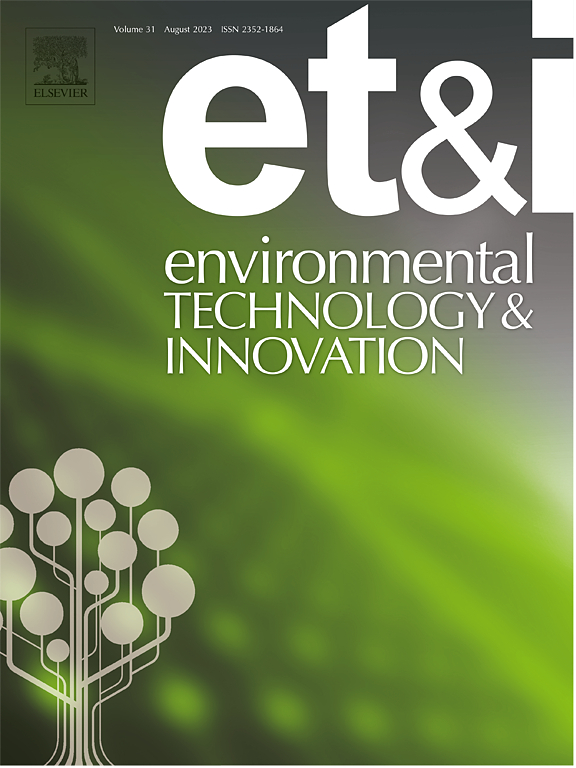Substitution of chemical fertilizer by biogas slurry maintain wheat yields by regulating soil properties and microbiomes
IF 6.7
2区 环境科学与生态学
Q1 BIOTECHNOLOGY & APPLIED MICROBIOLOGY
引用次数: 0
Abstract
At present, there is a lack of refined management for biogas slurry after toilet reconstruction, making it difficult to achieve safe treatment and resource utilization of biogas slurry. Utilizing biogas slurry instead of chemical fertilizers is able to significantly mitigate these issues. We established five fertilization treatments to investigate the impact of biogas slurry substitution on wheat growth, soil properties, and soil microbiomes in field experiments with varying proportions of biogas slurry. Utilizing small amounts of biogas slurry as a replacement for chemical fertilizers was able to maintain soil nutrient levels while sustaining wheat yield (from 2766.76 kg/hm² to 2973.13 kg/hm²), stabilize urease and catalase activities, and improve microbial communities. Additionally, using a minor amount of biogas slurry as a substitute for fertilizer resulted in an increase in the population of potentially beneficial bacteria and a decrease in the presence of potential fungal pathogens. Random forest analysis showed that the potentially beneficial bacteria (Stenotrophomonas, Streptomyces, Arenimonas), potentially fungal pathogens (Alternaria, Lectera, Fusarium), and consumer protists (Colpoda, Paracercomonas, Sandona) are the dominant predictors of wheat yields. Structural equation modelling showed that the replacement of chemical fertilizers by biogas slurry directly and indirectly sustained crop yield by altering soil characteristics and the microbial community. Our results showed that replacing 20 % of fertilizer with biogas slurry was concurrently able to maintain crop productivity while safeguarding the environment. These results improve our comprehension of the impact of various biogas slurry substitutes and hold significant theoretical importance for advancing the utilization of biogas slurry in the future.
用沼液代替化肥通过调节土壤性质和微生物群来维持小麦产量
目前对厕所改造后的沼液缺乏精细化管理,难以实现沼液的安全处理和资源化利用。利用沼液代替化肥能够显著缓解这些问题。通过田间试验,研究沼液替代5种施肥处理对小麦生长、土壤性状和土壤微生物组的影响。利用少量的沼液代替化肥能够在保持土壤养分水平的同时维持小麦产量(从2766.76 kg/hm²到2973.13 kg/hm²),稳定脲酶和过氧化氢酶活性,改善微生物群落。此外,使用少量的沼液作为肥料的替代品导致潜在有益细菌数量的增加和潜在真菌病原体存在的减少。随机森林分析表明,潜在的有益细菌(窄养单胞菌、链霉菌、Arenimonas)、潜在的真菌病原体(Alternaria、Lectera、Fusarium)和消费原生生物(Colpoda、Paracercomonas、Sandona)是小麦产量的主要预测因子。结构方程模型表明,沼液替代化肥直接或间接地通过改变土壤特征和微生物群落来维持作物产量。结果表明,用沼液代替20% %的肥料,既能保持作物生产力,又能保护环境。这些结果提高了我们对各种沼液替代品的影响的理解,对未来推进沼液的利用具有重要的理论意义。
本文章由计算机程序翻译,如有差异,请以英文原文为准。
求助全文
约1分钟内获得全文
求助全文
来源期刊

Environmental Technology & Innovation
Environmental Science-General Environmental Science
CiteScore
14.00
自引率
4.20%
发文量
435
审稿时长
74 days
期刊介绍:
Environmental Technology & Innovation adopts a challenge-oriented approach to solutions by integrating natural sciences to promote a sustainable future. The journal aims to foster the creation and development of innovative products, technologies, and ideas that enhance the environment, with impacts across soil, air, water, and food in rural and urban areas.
As a platform for disseminating scientific evidence for environmental protection and sustainable development, the journal emphasizes fundamental science, methodologies, tools, techniques, and policy considerations. It emphasizes the importance of science and technology in environmental benefits, including smarter, cleaner technologies for environmental protection, more efficient resource processing methods, and the evidence supporting their effectiveness.
 求助内容:
求助内容: 应助结果提醒方式:
应助结果提醒方式:


